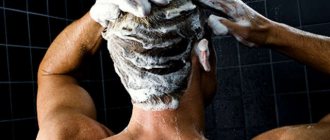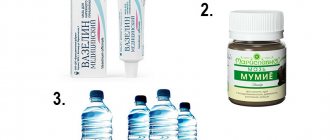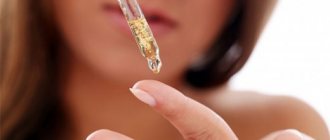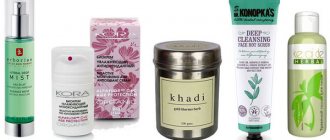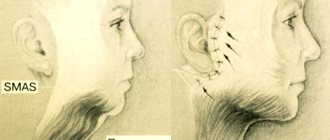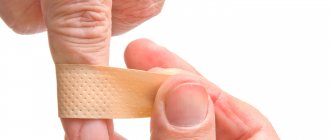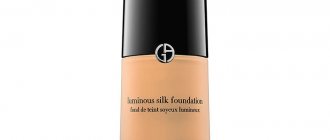When your skin constantly rubs against poorly fitting shoes, it puts unnecessary pressure on it. Over time, such friction begins to deform the skin, creating new growths called calluses.
Calluses cannot be called dangerous to human health, because in their essence they are the physical embodiment of the body’s protective reaction to too strong an external influence. In particular, calluses are often an occupational problem in some professions.
All this makes the question of how to remove different types of calluses especially relevant, because despite their safety, they cause quite unpleasant pain.
What is a callus?
The first step in understanding how to remove a callus is to find out what they are. They themselves are divided into two types: bone and skin, however, in the context of this article, it is the skin that will be considered.
Calluses appear as a result of constant pressure or friction on the same area of skin. By default it is quite small. In this area, subjected to physical impact, cells in the layers of the dermis begin to die at an accelerated rate.
Under normal conditions, they have time to peel off, however, during the formation of a callus, there is simply not enough of it. There is a gradual layering of layers of skin, they become more and more dense, which leads to the formation of calluses.
It is the feet that are most often susceptible to the appearance of calluses, since unsuitable shoes can easily disrupt normal blood circulation due to heavy loads, which leads to formations.
They most often appear in spring or summer, when women begin to choose shoes for the sake of beauty and fashion, and even inconvenience.
Potatoes to the rescue
How to remove a dry callus on your toe with regular potatoes? This vegetable is recommended to be used for making compresses. To do this, the potato tubers must be peeled, washed thoroughly, and then grated on a small grater. The result should be a paste. It should be applied to the problem area and left overnight. Potatoes soften dry tissue well and allow them to be carefully removed. It is worth noting that the gruel from the root vegetable draws out interstitial fluid well, so it can be used for wet calluses.
Types of calluses
Due to special conditions affecting the process of the appearance of calluses, they can be divided into several types:
- Wet (water);
- Dry callus;
- Corns;
- Callus;
- "Chicken zholka."
Wet (water) callus
Appears due to wearing excessively tight shoes, which cause friction on certain areas of the skin.
A factor influencing the appearance of dropsy is increased sweating.
Moreover, such a callus can occur not only on the legs, but also on almost all parts of the body if pressure is constantly applied to it.
People with sensitive skin are especially susceptible to this problem, since it is quite easy to damage.
As soon as mechanical damage appears on the skin, liquid begins to accumulate due to sweat, forming a bubble protruding above the skin layer.
It causes slight pain in humans, so effort is required to remove it to prevent infection.
Dry callus
This type of callus is often a stage that occurs after a wet callus.
It is formed after prolonged pressure on the skin, very moderate, not strong, but constant.
The skin layers die more slowly, so the roughening of the dermis occurs at a gradual pace.
The end result is a keratinized area of skin with dead dermis of a gray or yellow hue with a slight elevation.
Very often, hard calluses act as an assistant if a person is engaged in physical work. In such cases, hard calluses become another protective layer that helps protect the body from damage.
As a rule, they do not cause pain, except in cases of excessive neglect when cracks appear in the skin. However, even in this case the pain will be slight.
Corns
This type is the most common.
At the initial stage, this type of hard callus does not cause discomfort.
They appear on the foot, namely its convex part, where the muscle-fat layer lies.
The standard color is yellow or dirty grayish. Corns are often quite large in size without clear boundaries.
Callus
The most dangerous type of calluses appears on the soles of the feet, usually in the space between the toes.
They got their name due to the presence of a rod several millimeters long in the center of the formation.
It is quite difficult to remove this type of callus precisely because of this rod.
If handled incorrectly, it causes severe pain due to small cracks that appear.
There is a gradual ingrowth of the callus into the soft tissue, so it is impossible to get rid of it at home.
"Chicken zholka"
Gradually, a small nodule turns into a fairly large callus without clear boundaries in the form of a rough growth.
A distinctive feature of the species is the presence of black dots.
It can cause pain when walking due to its rather soft structure.
A callus can appear only in those who are carriers of the human papillomavirus, and age does not play a role here at all.
Hardware methods and radical removal
Cosmetology salons today offer a whole range of procedures that relieve pathological roughening of the skin and calluses. The main methods of treatment are:
- Laser resurfacing. The skin is exposed to a low-frequency laser, which virtually eliminates the risk of tissue damage. Using a laser beam, a corn or callus is eliminated during the first visit.
- Cryodestruction. Treatment of calluses involves destroying the structure with liquid nitrogen. An effective method of removal without scars or scars. The skin after the procedure becomes soft and silky.
- Mechanical grinding. Just a few procedures and the area of callus will disappear without a trace. This way you can solve the problem of corns and dry calluses on your hands and feet.
- Surgical excision. A simple but painful method of removing dry callus with a rod, which uses a regular scalpel. If the callus size is incorrectly assessed, there is a risk of damage to healthy tissue. Complications such as infection are possible. The method is used under local anesthesia.
Some hardware treatment methods are used simultaneously with hygienic pedicure. In other cases, the appointment is advisable when traditional methods of therapy are ineffective.
If dry calluses are very painful, fester, or bleed after prolonged walking, then an active inflammatory process is taking place. Here, consultation with a surgeon or podiatrist is necessary to exclude serious complications such as sepsis and osteomyelitis. With this course of the pathological process, immediate professional treatment is required, including the prescription of antibacterial therapy
Causes of calluses
Each type of callus has its own common causes:
- Choosing low-quality or unsuitable footwear;
- Wearing socks larger than required;
- Working with construction and gardening tools, playing musical instruments without using gloves;
- Walking completely without shoes;
- Excess weight, heavy gait;
- Failure to follow the rules of foot and shoe care, lack of hygiene, especially with increased sweating.
However, it is possible to name a number of individual reasons that affect specifically a certain type of callus.
Reasons for the appearance of a wet look:
- Tight and uncomfortable shoes;
- Use of working and musical instruments.
In general, this appearance occurs precisely because of uncomfortable friction combined with excessive sweating.
The hard appearance occurs due to:
- Inappropriate shoes;
- Constant participation in sports or heavy physical labor;
- Flat feet or wearing high-heeled shoes;
- Due to frequent drawing or writing;
- Joint diseases: arthritis, osteoarthritis;
- Hypovitaminosis with vitamin A.
Causes of corns:
- Wearing high-heeled shoes with thin soles;
- Walking without shoes;
- Shoes made from artificial materials that create high-thermal and humid conditions for the feet;
- Leg injuries or constant carrying of heavy loads;
- Wearing socks that are too big;
- The insole of the shoe has deteriorated or is simply deformed;
- Frequent squeezing of the feet due to foreign debris getting into the shoes.
Callus appears due to:
- The presence of a virus or fungus in the body;
- Getting a foreign object under the skin layer and slowly becoming overgrown with hard tissue;
- Incorrect shoes with redistribution to the forefoot;
- During the transition of the callus stages from wet to dry, it grows into the soft tissue to form a core.
Chicken gall is formed only due to the presence of the human papillomavirus in the body.
However, for the development of HPV there must be a provoking factor:
- Heavy sweating;
- Suppressed immunity;
- Bad shoes;
- Damaged skin of the feet or excessive dryness;
- Flat feet.
Locations of different types of formations
Calluses are mainly concentrated on the feet. The most affected areas are the toes, heels, soles or sides of the feet.
Due to constant stress, they often cause pain or simply cause trouble for their owner. The localization of calluses is mainly determined by the structural features of the foot, the presence of problems in the orthopedic department, the preferred type of shoes and lifestyle.
Calluses on fingers
Calluses on the fingers appear mainly due to wearing very tight shoes. They are often caused by narrow toes in fashionable shoes, which cause chafing on the balls and sides of the toe.
They also constantly have a physical impact on the spaces between them, so after a while folds appear, and then blisters and formations.
The same effect is caused by the presence of bone damage to the fingers. Uncomfortable shoes also cause hard calluses on the little toes.
Calluses on the heels
Heel formations appear as a result of constant foot discomfort from wearing uncomfortable shoes. Gradually, the formations that form from flip-flops and open sandals develop into rough corns.
Calluses on the feet
Formations on the feet are the most common. They usually appear on the side of the foot, near the heel or on the balls of the foot. They are a constant problem for women who prefer to wear high-heeled shoes even in ordinary situations.
Such shoes have a very strong impact on the feet, especially if you are overweight or have orthopedic problems. Plantar lesions are rarely soft or watery.
They usually do not cause pain, but they often gradually grow into the dermal tissue, causing disturbances in normal blood circulation.
How to choose a remedy for calluses
It’s not difficult to find a high-quality cream for calluses on your feet or hands. First, you need to decide on the type of callus. To remove moisture, products with antimicrobial and drying components are required. These are zinc, phytoextracts of chamomile, string, celandine, lanolin, sea buckthorn oil and others. And salicylic acid and urea do an excellent job with rough corns.
Secondly, when choosing, you need to take into account the speed of the therapeutic effect. Some ointments gently exfoliate the keratinized epithelium, completely removing it in 3-4 weeks. And others, in a couple of days, painlessly flatten the callus and evacuate its contents to the surface.
It is not advisable to pay attention to cost. The price of good fast-acting anti-corn agents often does not exceed 100-150 rubles. At the same time, they immediately exhibit therapeutic effects, are well absorbed and are well tolerated.
Drug and physical treatment of calluses
If you need to remove any type of callus, the first thing you should do is consult a surgeon or dermatologist. It is these doctors who have the right to make a diagnosis and determine subsequent treatment.
You should not choose a treatment method on your own, especially piercing the formation, since the callus is quite similar in appearance to a wart, which should never be damaged
.
If the doctor has diagnosed a callus, then depending on its type, you should pay attention to the following treatment.
Wet callus
It is best not to touch a small wet callus. Nowadays pharmacies sell special types of patches that will prevent damage to the formation if you simply stick them on top.
Another thing is large dropsy, which causes pain when walking, and the water bubble can burst.
Step-by-step instructions for getting rid of wet calluses:
- Piercing is required: this is done only with a previously disinfected needle;
- the callus itself also needs to be coated with brilliant green or iodine;
- it is pierced from the side, along a parallel line to the skin;
- piercing perpendicularly is absolutely prohibited, since the skin that forms the bottom of the callus may be damaged;
- the most important thing when carrying out the procedure is not to damage the walls of the formation too much;
Tetracycline ointment
Erythromycin ointment
Levomekol
If an infection occurs during a puncture, then you should contact a surgeon for an operation to completely remove the walls. You cannot do this on your own, since the surgeon jointly carries out the treatment required by the case and prescribes treatment.
Dry callus
Quite often, because dry calluses are not painful, people do not strive to get rid of them. This approach is incorrect not only because of the loss of aesthetic appearance, but also because such damage can cause microcracks.
Most often, products based on salicylic acid are used to remove this type:
- Salicylic ointment - average price 20 rubles ;
- Agave - average price 80 rubles ;
- Nemozol - average price 70 rubles ;
- Cream Namozol - average price 110 rubles ;
- Collomak - average price 350 rubles ;
- Pasta “5 days” - average price 60 rubles .
Mode of application:
- the ointment is applied to previously washed feet;
- a patch is glued over it so that the product remains in one place;
- to prevent the drug from affecting surrounding tissues, the patch is glued with a hole cut out according to the size of the callus;
- the procedure is repeated once or twice a day;
- The duration of treatment is 28 days maximum, usually this time is enough to burn the callus from its bed.
Salicylic ointment
Agave
Nezosol
Cream Namosol
Collomak
Paste “5 days”
Products with lactic acid, which serves as a softener for growth, have a milder effect:
- Super Antimozolin - average price 100 rubles ;
- Lactic acid solution - average price 80 rubles ;
- Cream Green Pharmacy - average price 170 rubles ;
- Cream Effect - average price 50 rubles .
Mode of application:
- apply a thick layer to the callus on dry, washed feet;
- cover the top with wax paper;
- wear woolen socks;
- after 2 hours, the softened skin is carefully scraped off with a special nail file;
- the remaining cream is washed off with warm water;
- the procedure is repeated after 1-2 days.
Super Antimozolin
Lactic acid solution
Cream Green Pharmacy
Cream Effect
Aggressive help can be provided by products based on sodium hydroxide, which cause the callus to darken, but do not cause pain due to necrosis:
- Super Chistoto - average price 30 rubles ;
- Super Celandine - average price 25 rubles ;
- Antipapillom gel - average price 130 rubles .
Mode of application:
- apply to previously cleaned and steamed callus;
- apply very carefully so as not to touch healthy skin; there is a special applicator for this;
- within 1-2 days, dead tissue gradually falls off;
- If necessary, you can repeat the application of the product.
Super Celandine
Super Celandine
Antipapillom gel
Refrigerants and phenol-containing products have shown effectiveness:
- Kondilin - average price 600 rubles ;
- Verukkatsid - average price 200 rubles ;
- Wartner - average price 500 rubles ;
- CryoPharma - average price 700 rubles .
Mode of application:
- the callus is very carefully treated with the solution;
- air dried;
- it gradually dries out and falls off;
- If necessary, the treatment is repeated.
Kondilin
Verukkacid
Wartner
CryoPharma
Physical intervention
If the dry growth cannot be removed with ointment, then surgical or cosmetic intervention can be used. These will be procedures for treating damaged areas with liquid nitrogen or laser.
After the procedure, you need to carefully monitor the skin, apply antiseptic ointment to the site where the growths are removed and cover with a band-aid to avoid infection.
You cannot cut out the dry type of formations yourself, since there is a high probability of infection in a new wound.
Corns
To remove corns, a consultation with a dermatologist is required.
The most successful methods of disposal are cosmetic procedures:
- Laser destruction is used to treat corns of any size, so it is considered the most reliable. Pain is minimal, recovery time is short, recurrence is extremely low;
- Cauterization with liquid nitrogen is usually used to remove deep growths.
Among the medications to get rid of the problem, keratolytic agents, sold in any pharmacy, are mainly used. A suitable product may be based on salicylic acid.
This type of ointment includes:
- Doctor - average price 140 rubles ;
- Bensalitin - average price 80 rubles ;
- Nazosol 911 - average price 110 rubles ;
- Keratolan - average price 130 rubles ;
- Betadermic - average price 180 rubles .
Special patches can help:
- Salipod - average price 50-100 rubles ;
- Tianhe - average price 120 rubles ;
- Compeed - average price 300 rubles .
Salipod
Tianhe
Compeed
Such patches already contain a composition that helps relieve pain after the first use, and after a week completely get rid of this type of growth.
Relatively recently, another Japanese invention appeared that allows lovers of high heels to enjoy smooth feet - socks, the average price is from 200 to 1450 rubles . They act as both a bath and a cream for the whole night.
Callus
Removing a rod growth is quite difficult, because the first step is to get rid of the rod itself. It is best to consult a doctor for this.
The following types of removal are usually used:
- Laser removal
Drilling - complete removal of the root of the callus to prevent relapse; - Laser removal - for particularly advanced cases in order to burn out the root;
- Cryotherapy.
All procedures are carried out quite quickly. It only takes 1 session to remove the callus.
"Chicken zholka"
To remove the “chicken jowl” type, surgical techniques are used:
-
Laser method - with its help you can reduce even a deep callus to a small spot; - Radio wave method - carried out using a special radio knife;
- Electrocoagulation —used for small tumors, affects the growth with high-frequency current.
- Cauterization with liquid nitrogen.
Which doctor removes calluses?
To get rid of the problem, you need to contact a dermatologist or surgeon. In general, most medical centers are equipped with the equipment necessary to provide callus treatment.
Sometimes pedicurists with the appropriate qualifications can help solve the problem.
The patient must understand that it is necessary to act not only on the callus itself, but also on the cause that led to its occurrence. To do this, you need to consult a podologist or orthopedist. It is important to make sure that the foot has the correct anatomical structure and that the load on it is distributed correctly. Sometimes it happens that skin calluses are the result of flat feet and even a fungal infection. In this case, a person requires professional treatment with medications, and not just removal of the callus itself.
Removing different types of calluses at home
If you do not want to use surgical methods, then traditional medicine also has a number of useful recipes that help get rid of different types of calluses.
Wet callus
If you do not want to pierce the callus with a needle, you can use the following recipes:
- Salt bath - pour a couple of tablespoons of salt into 2 liters of warm water, then soak your feet in it for about ten minutes. Be sure to rinse them to remove excess salt. Chamomile or milk baths will have a similar effect;
- Essential oil lotion – the composition of the product consists of vegetable and tea tree essential oils in a concentration of 3 to 1. Wet a cotton swab with the product and apply it to the callus. It is recommended to do this lotion at least 4 times a day, since tea tree oil, in addition to its healing effect, will have an antiseptic effect;
- Potato lotions - potatoes are grated on a fine grater, after which the pulp is spread on cheesecloth. A gauze swab is rolled into a bag and applied to the damaged area, after which it is fixed with a bandage or plaster. Change once a day;
- Lightly rub fresh plantain leaves
Dry appearance of calluses
Traditional methods act as additional treatment; they are especially useful for healing damaged skin.
Several effective recipes:
- Onion compress - put grated onion gruel on the place of the callus, wrap the leg in plastic and leave for the whole night. In the morning after removing the compress, walk over the area with a pumice stone;
- A fresh aloe leaf with oozing juice must be applied to the injured area and fixed. It is best to do the procedure at night so that the effect lasts for at least 8 hours;
- Tomato pulp - use a similar method, however, the compress should not be kept for more than 3 hours;
- Baths made from a decoction of pine buds or salt baths, a solution of potassium permanganate - steam your feet in them for no more than 15 minutes.
Getting rid of corns using folk remedies
Before using home methods, it is recommended to consult a dermatologist.
Folk remedies:
- Sour milk bath - slightly warm the sour milk, then place your feet in it for half an hour. After the bath, treat your feet with a mixture of 1 part glycerin and 1 part castor oil;
- Onion compress – cut the onion into thin pieces, apply them to the callus and wrap it in a plastic bag. Secure everything on top with warm woolen socks and leave everything overnight. In the morning after removing the onions, wipe your feet with pumice and sprinkle with talcum powder;
- Apple cider vinegar compress – the mixture will require 1 tablespoon each of apple cider vinegar and sunflower oil, as well as 1 egg. Whisk all ingredients thoroughly and treat the damaged areas, put on warm socks and leave everything overnight. In the morning, take a salt bath and scrub with a brush. To get rid of corns you will need only 5 sessions;
- Soap-soda bath - scoop up 1 tablespoon of laundry soap, pour it into hot water, add a tablespoon of soda and a little ammonia. Keep your feet for half an hour. The bath is highly effective.
Callus
Traditional methods will not help get rid of it at home, however, they can have a concomitant effect.
You can use the following recipes:
- Mustard bath – dissolve mustard powder in hot water. Use no more than 1 tablespoon per liter of water. Keep your feet in such conditions for about half an hour, then rub them with pumice;
- Soap and soda bath for hands or feet. If the callus core was very small, then about 10 procedures will show their effect;
- Table vinegar - pour a small amount of vinegar onto a regular patch and stick it on the callus. Walk with it during the day, then remove it at night, and apply a fresh patch in the morning;
- fresh celandine juice to the damaged area of the foot, treat the callus with it, and then seal it with a band-aid overnight.
"Chicken zholka"
HPV cannot be cured unless it is infected; it remains in the human body for life. However, you can prevent its spread.
Folk recipes will help with this:
- Fresh celandine in the summer. The yellowish juice must be rubbed into the callus 2 times a day, without getting it on clean skin. After the chicken jolka becomes softer, it can be treated with pumice;
- Table vinegar will make the procedure effective, but painful. Use a cotton swab or pipette for spot application;
- Banana peel needs to be applied to the damaged area for a couple of hours.
Application of garlic
Not everyone knows how to remove dry calluses using folk remedies. At the same time, there are plenty of recipes for alternative medicine. You can get rid of dry calluses on your feet using garlic. To do this, the vegetable must be peeled. It is recommended to grind a clove of garlic and mix it with a teaspoon of vinegar essence. Flour must be added to the resulting mass. A teaspoon will be enough.
The ingredients need to be mixed well to form something like a dough. From the resulting mass it is necessary to form a cake. It should be applied to the problem area and securely fixed with a band-aid. The compress can be removed only after two days. After this, you should carefully remove the softened callus.
Preventing calluses
With proper prevention, the appearance of any types of calluses is quite easy to get rid of.
All you need to do is follow a few simple rules, and then education will never be disturbed:
- Buy comfortable and high-quality shoes: do not run primarily after fashion and beauty, throwing comfort back;
- buy a new pair in the evening;
- before putting it on when going out, spend some time at home with a thick sock so that it adjusts;
